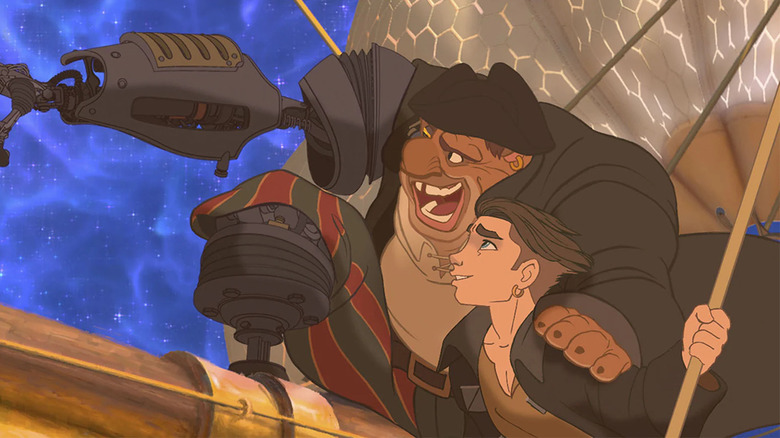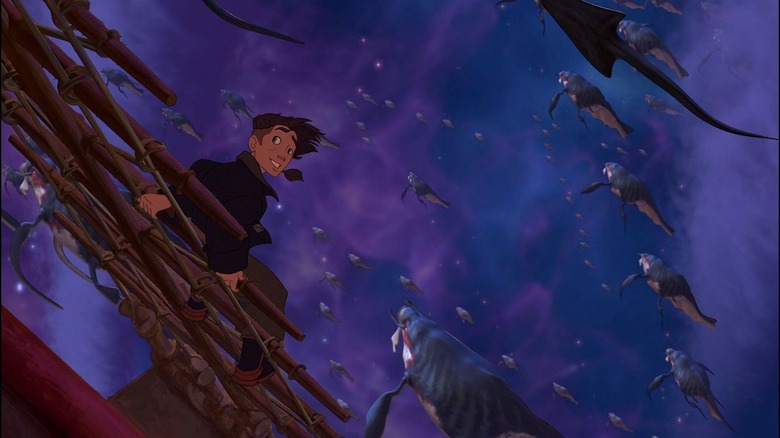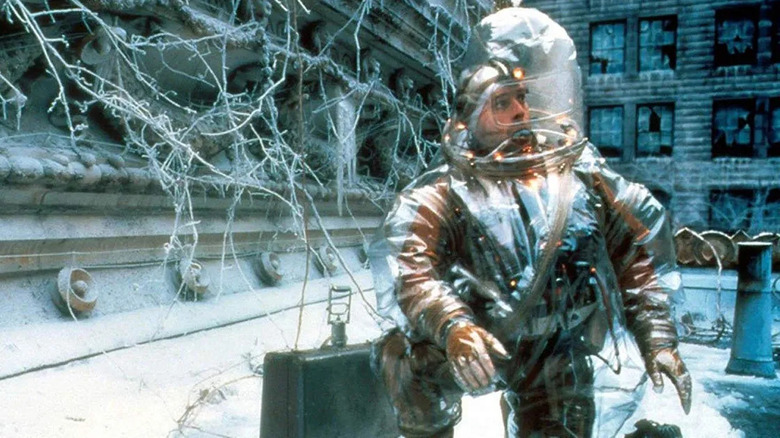Terry Gilliam's Films Were The Blueprint For The World Of Treasure Planet
2002's "Treasure Planet" may've been one of the biggest flops in the history of Disney's animation department, but the swashbuckling sci-fi adventure starring Joseph Gordon-Levitt still has its fair share of fans. The immersive and often beautiful world of space pirates created for the film separates the project from other, more recognizable Disney animated offerings. "Treasure Planet" itself was directed by Ron Clements and John Musker, a filmmaking duo that had previously delivered multiple slam-dunks for Disney, including "The Little Mermaid," "Aladdin," and "Hercules." Their successful track record allowed the directors to venture into a new reality, one inspired by another filmmaker's mind-bending work.
As we remember it, "Treasure Planet" more than earned its title with a space adventure story for the ages. A sci-fi twist on Robert Louis Stevenson's novel "Treasure Island," the film followed Jim Hawkins (Gordon-Levitt), a teenager who comes across a map that leads to the ultimate pirate treasure. In his journey to find it, Jim encounters a myriad of other characters, including John Silver (Brian Murray), a cyborg space pirate who becomes a mentor and father figure to the ambitious kid. Each character is unique in their own way, as is the surrounding universe. Indeed, given the final result, it's no shock that filmmaker Terry Gilliam's visually-striking body of work actually served as the blueprint for "Treasure Planet."
'We had to create a universe'
There may be pirates in "Treasure Planet," but with sailing ships capable of traveling through outer space and frequenting various planets, there's a distinct fantastical air to Disney's sci-fi swashbuckler. In a 2002 interview with IGN, co-director John Musker explained that the world-building in "Treasure Planet" was always a priority for them, as inspired by Terry Gilliam's filmography:
"From the earliest go-round there was this kind of romantic archetypal image that we wanted, and we had to create a universe that supported that. So that's why we didn't say 'It's the future of this universe,' because we wanted to have breathable atmospheres and no guys in bubble helmets. It had to be an alternate world –- we were influenced by Terry Gilliam and his fantasy worlds."
Although Musker did not mention which of Gilliam's films specifically served as inspiration, several come to mind. Whether it's "Monty Python and the Holy Grail" or "12 Monkeys," Gilliam's long list of high-concept projects all toe the fine line between creating a dream-like reality and one that is more grounded and recognizable. Not only are the worlds created by Gilliam a good source of inspiration, but they still adhere to thematic ideas about our own world.
Exploring different worlds
Coupled with his sense of surrealism, the thing that makes Terry Gilliam's work the benchmark for sci-fi world-building is how it can be applied to the real world. For instance, in "12 Monkeys," a catastrophic pandemic is at the center of a time-bending narrative that is visually unique and remains eerily relevant (for obvious reasons). In "Brazil," Gilliam sought to criticize our real-world social bureaucracies through the lens of an original, alternate reality teetering on nightmarish. Gilliam brought layers to his imaginary worlds, which made them a fitting blueprint for "Treasure Planet."
The fantastical elements Gilliam adds to his stories bring out those unsettling qualities often found in dreams. "Treasure Planet" likewise features a wide array of different creatures and bits and bobs that make it a unique experience. Even the film's 3D animation signaled a change of pace for Disney at the time, which aspired to usher in a new franchise with the ill-fated film. But it's all grounded by a story about adolescence, and a journey that proves it really is about the friends you make along the way. "Treasure Planet" may be a forgotten treasure (the movie's cult fanbase aside), but it's proof that the journey is far more impactful than the destination.


